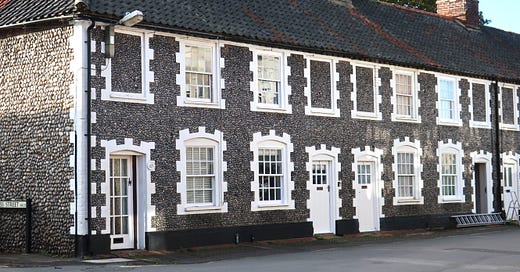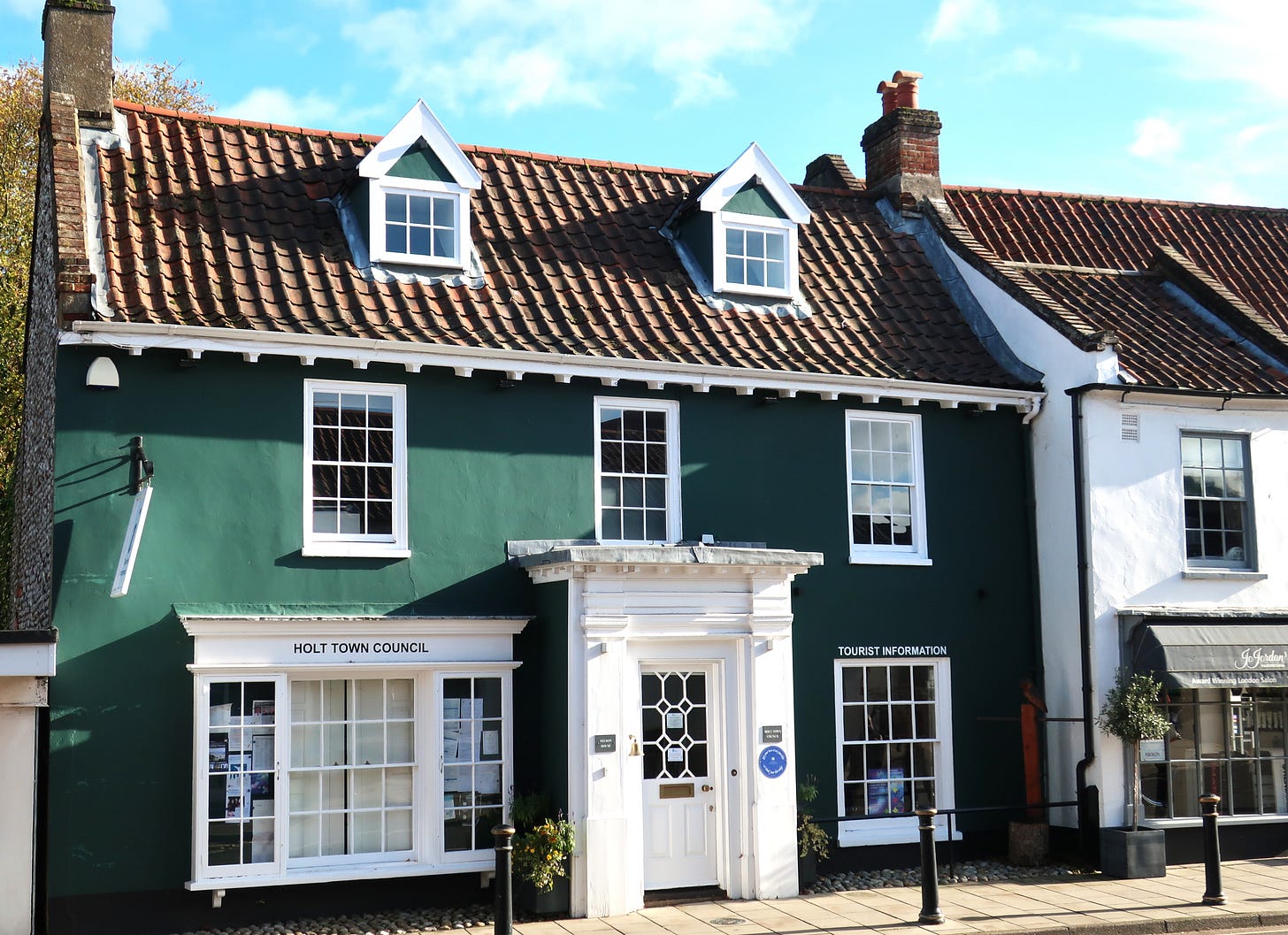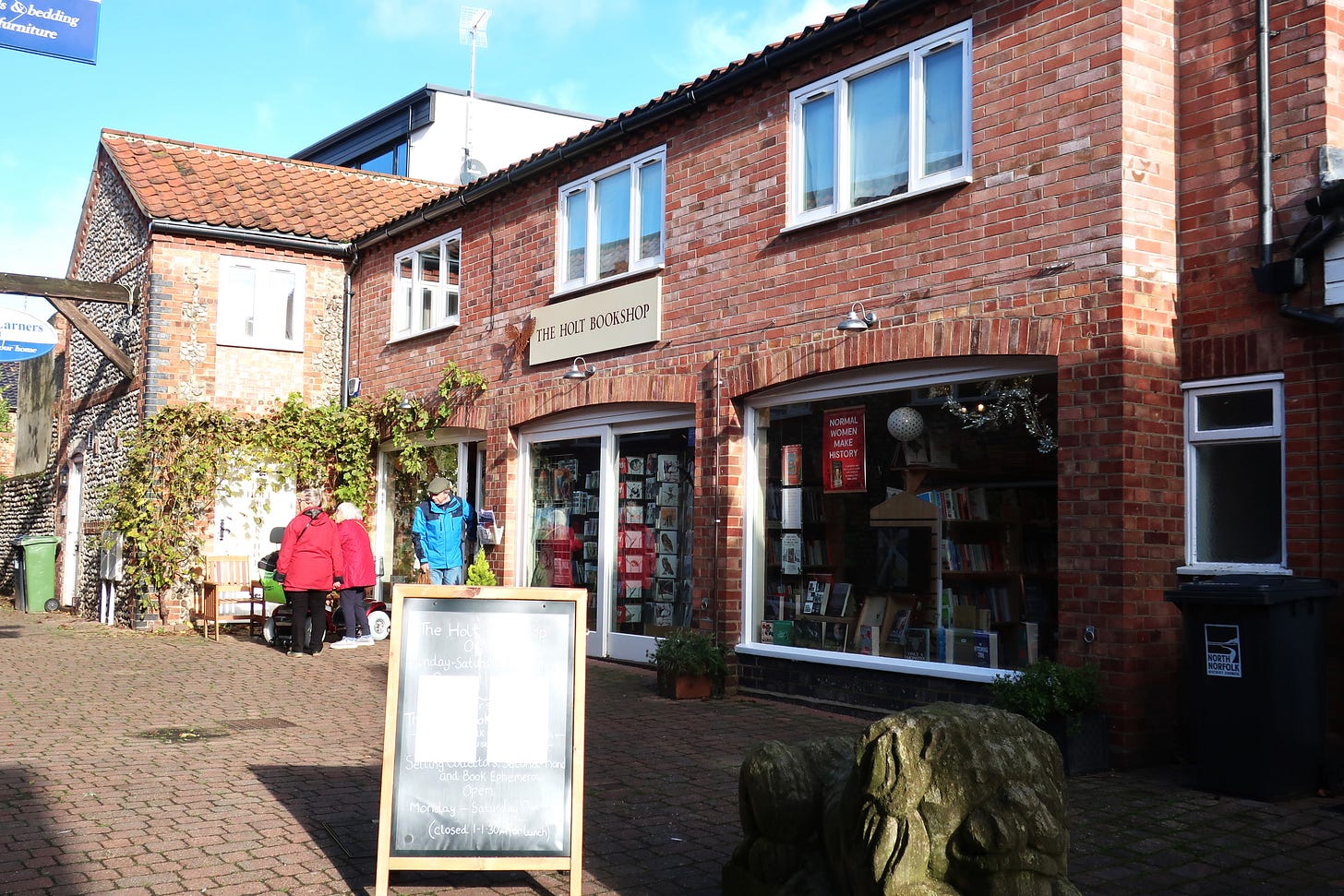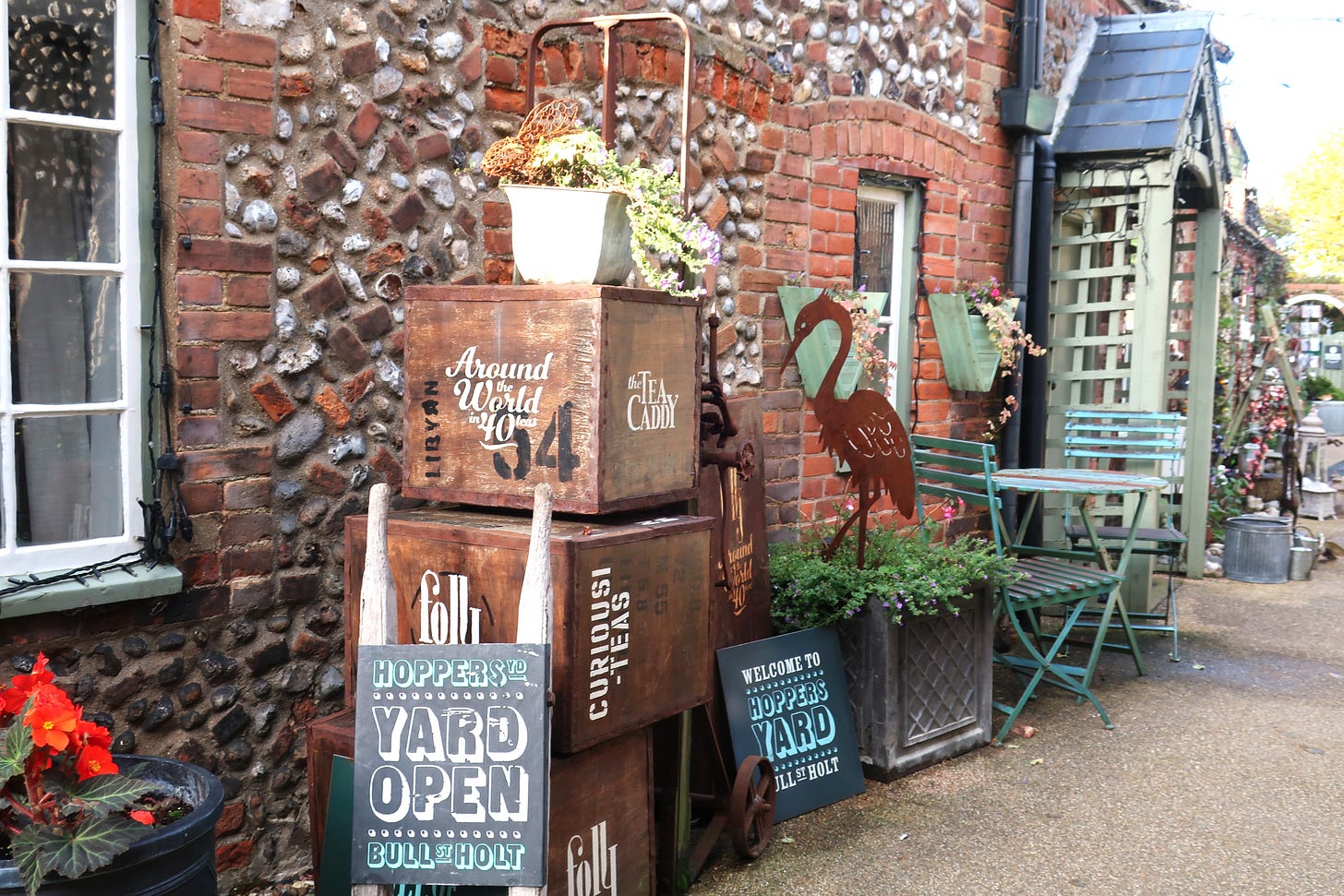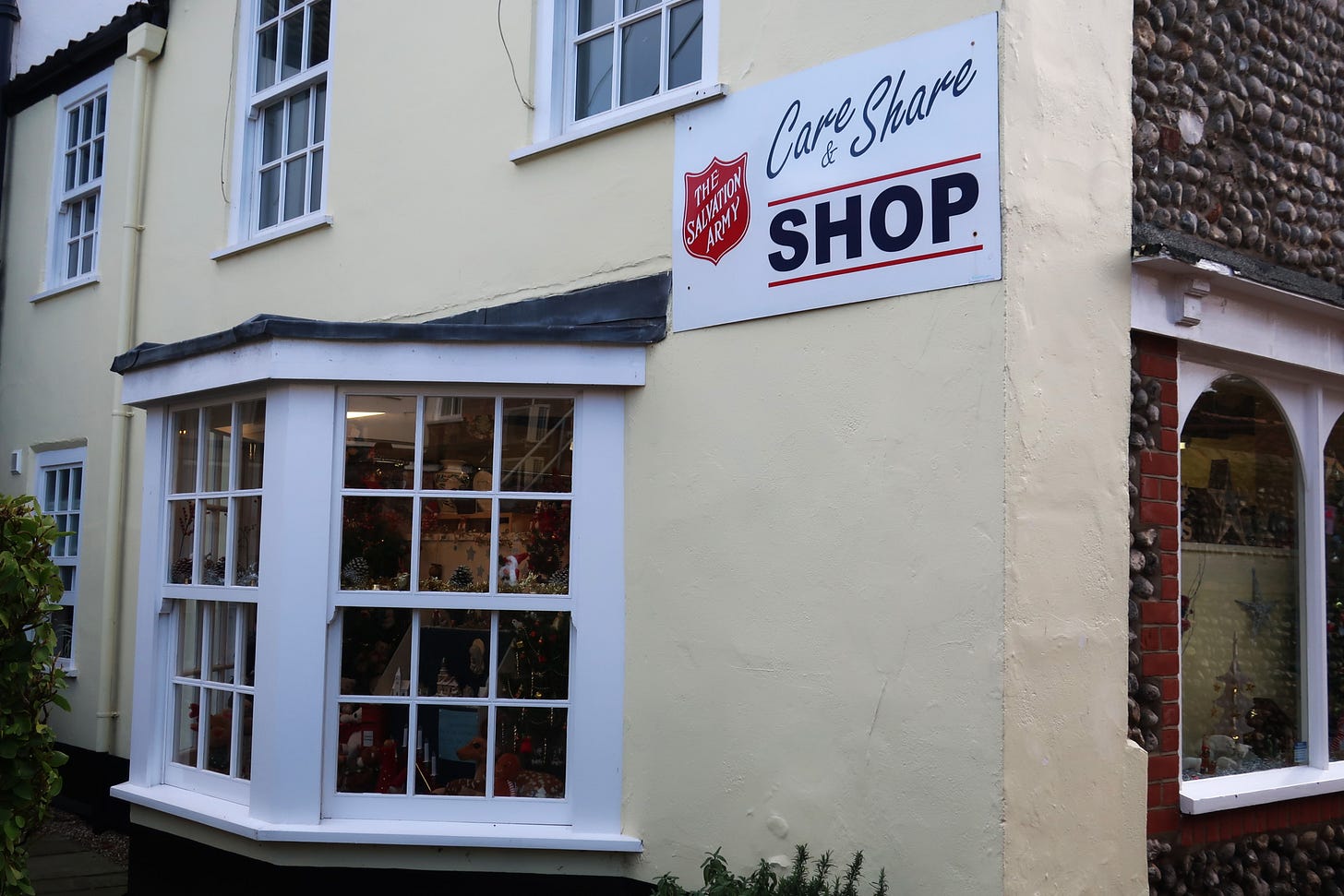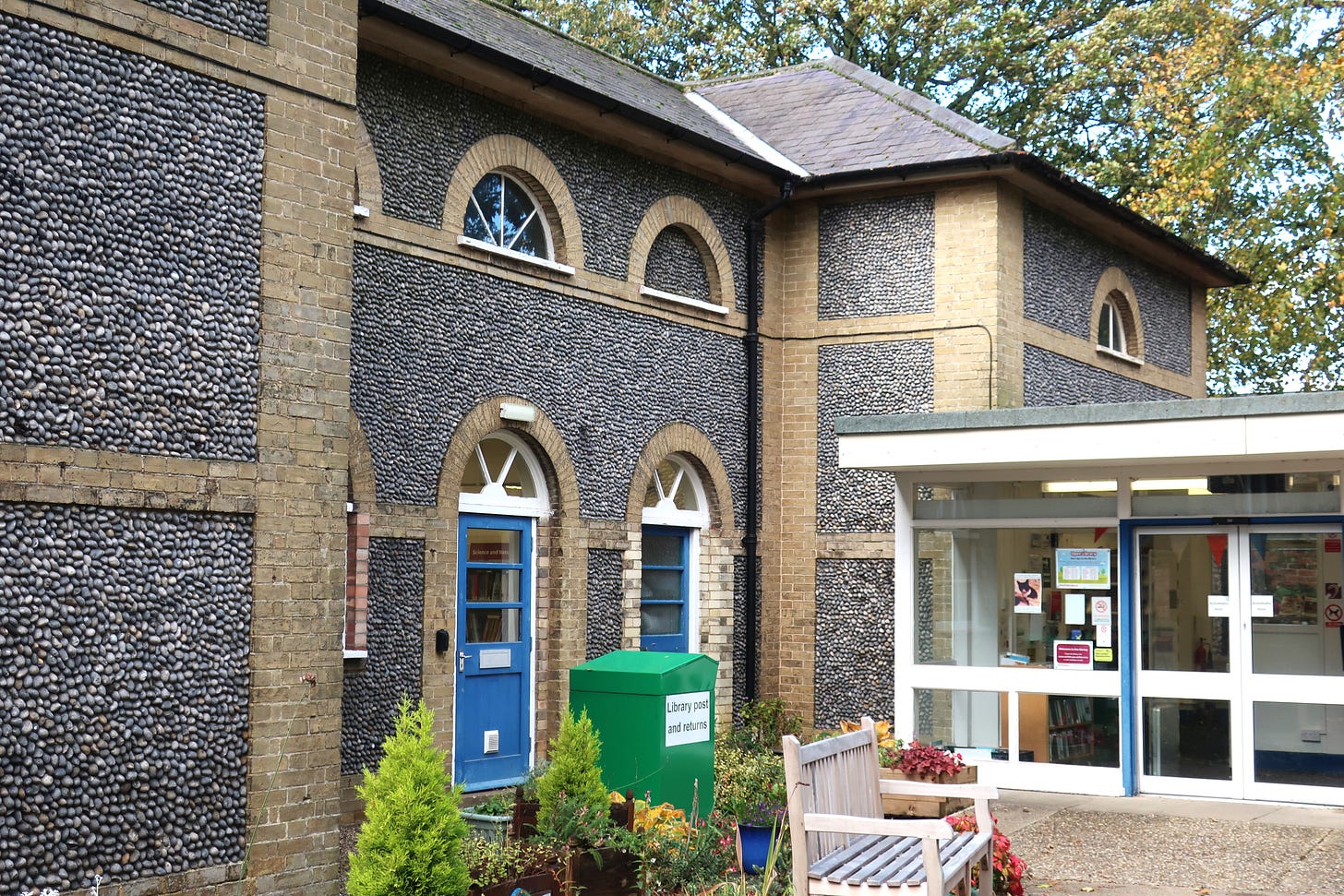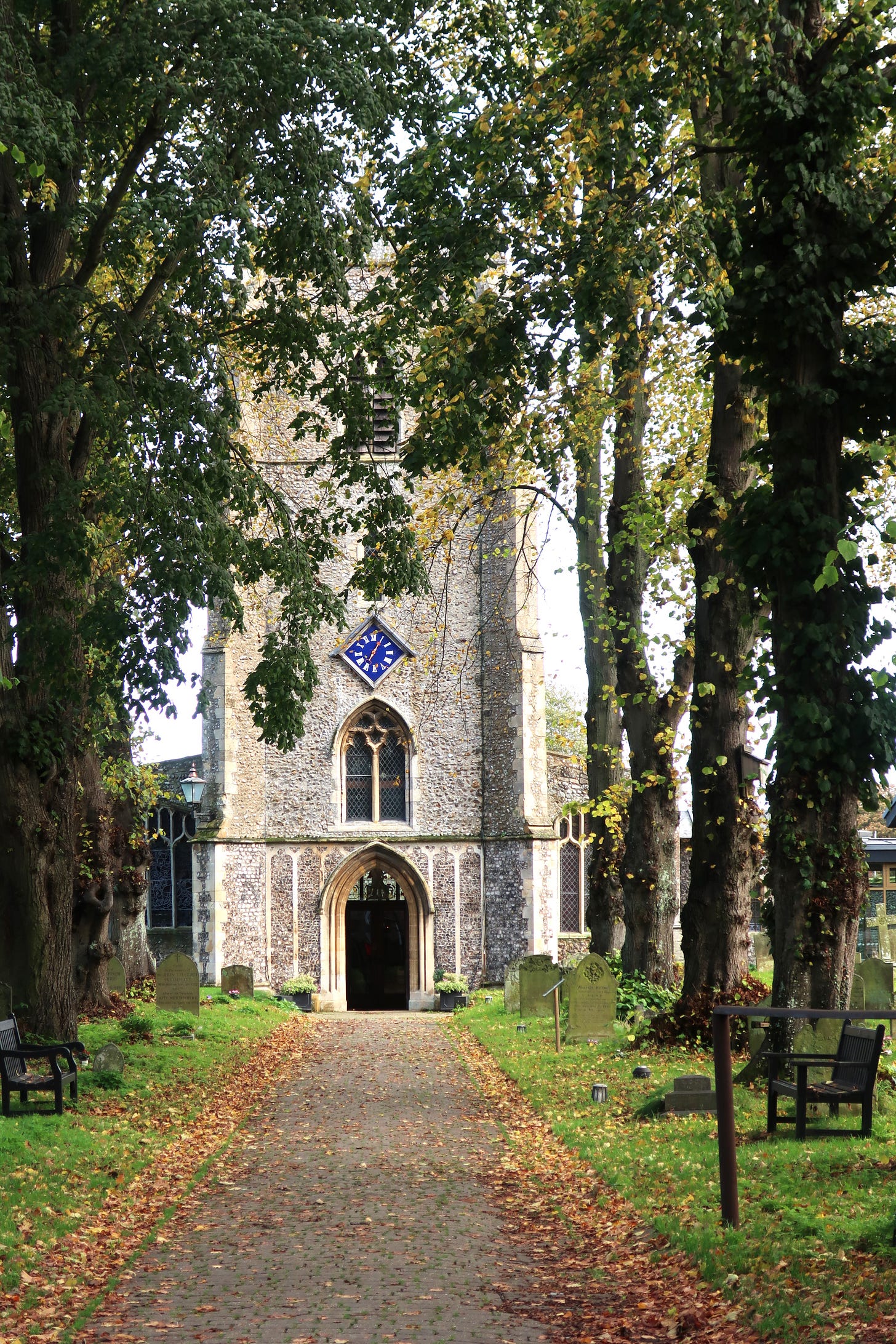Following the Owl Trail in Holt
I’m looking after my cousins’ cat while they are visiting family in New Zealand. They live in Fakenham, a market town in North Norfolk. Fortunately for me, it’s well connected by bus to a variety of neighbouring communities.
My first day trip was to Holt, which is a treasure trove of independent stores (art, antiques, fashion, food), many of them hidden away in small courtyards off the main streets. A great fire swept through the city on the 1st of May 1708. There was an upside to this disaster for future generations as the town was rebuilt in a consistent Georgian style. Georgian buildings are symmetrical and well-proportioned: “simple mathematical ratios were used to determine the height of a window in relation to its width or the shape of a room as a double cube.”
Free brochures invite visitors to Holt to follow the owl trail and it was very informative. One of the surprises for me was how many courtyards could be accessed from the 2 or 3 main streets. The Lion Yard used to be a bottling plant while the Market Yard has replaced the cattle market. The town continues to add new courtyards, one of which is the Appleyard where they’ve retained the original apple tree.
You never know what stores you may find when you enter each yard. There’s a wonderful bookstore, some very interesting antique/art/china stores, as well as the ubiquitous charity stores that line every high street in England.
Holt Library was converted from former stable buildings and constructed in a traditional style with small flints of matching sizes. Flint buildings are common in Norfolk, taking the place of stone or brick.
Why the owl trail? An ancient legend recounts the story of some local men who put an owl in jail for “safe-keeping”. It promptly flew away.

